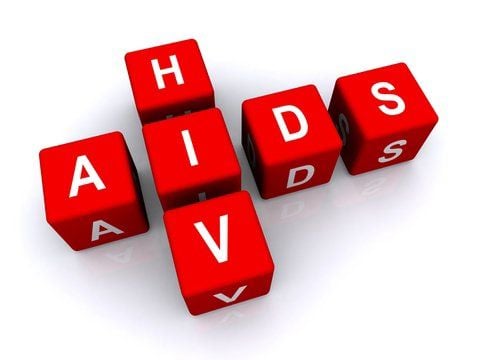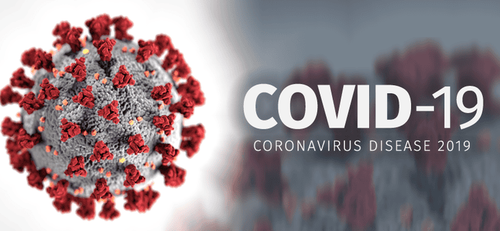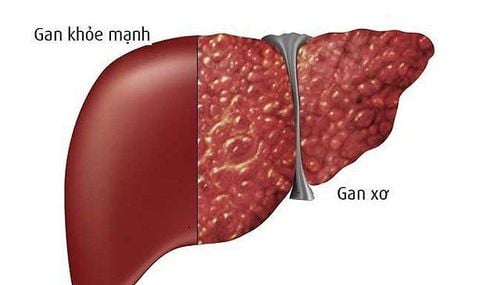This is an automatically translated article.
The article is written by Specialist I Tran Ngoc Thuy Hang - Resuscitation - Emergency Doctor, Emergency Department - Vinmec Central Park International General Hospital.
Acute pharyngitis is one of the common diseases in the community. Most cases of acute pharyngitis are caused by respiratory viruses and are self-limited. However, the symptoms of viral pharyngitis often overlap with pharyngitis due to significant treatable causes.
1. Epidemiology
Acute pharyngitis accounts for approximately 12 million emergency room visits, between 1 and 2% of all emergency room visits in the United States annually. The incidence is highest in children and adolescents with about 50% of all cases occurring before the age of 18 years. In adults, most cases of acute pharyngitis occur by age 40, and incidence declines thereafter.
2. Causes and clinical picture
Causes of sore throat can be broadly classified as infectious (usually viral or bacterial) and non-infectious. The two most common infectious causes are respiratory viruses and group A Streptococcus (GAS).
Most patients with pharyngitis from any cause present:
Sore throat, worse when swallowing; Neck pain or swelling due to regional lymphadenopathy often accompanies a sore throat; Fever, headache, fatigue, and malaise have many different manifestations. Specific microbiological causes of pharyngitis are rarely distinguishable on the basis of clinical features alone. However, understanding the relatively common prevalence of pharyngitis causes, and their clinical features, can help in a focused assessment of the causes.

Bệnh nhân viêm họng đều có biểu hiện đau họng, nổi hạch vùng cổ, sốt
2.1. Pharyngitis caused by infectious agents
Respiratory viruses, including SARS-CoV-2 . Respiratory viruses are the most common cause of acute pharyngitis, accounting for about 25 to 45% of cases. Adenoviruses, rhinoviruses, and coronaviruses (including severe acute respiratory syndrome coronavirus 2 [SARS-CoV-2], the virus that causes coronavirus disease 2019 [COVID-19]) are among the leading causes of viral pharyngitis. withdraw. Other respiratory viruses that cause sore throats include enteroviruses, influenza A and B, parainfluenza virus, and respiratory syncytial virus.
Patients with viral pharyngitis often have other upper respiratory tract signs and symptoms such as fatigue, nasal congestion, and cough. Runny nose, conjunctivitis, sneezing, hoarseness, ear pain, sinus discomfort, mouth ulcers, and peripheral rash are additional features supporting the diagnosis of viral pharyngitis. Fever associated with viral upper respiratory tract infections is usually low-grade except in patients with influenza and COVID-19. Cervical lymph nodes may be present but are generally not prominent.
Group A Streptococcus, Streptococcus A - GAS is the most common bacteria that causes acute pharyngitis and is estimated to cause about 5 to 15 percent of acute pharyngitis cases in adults in the United States. developed and accounts for a higher proportion in developing and less developed countries.
Classical signs and symptoms of GAS pharyngitis include acute-onset sore throat, fever, oropharyngeal edema, patchy tonsil secretions, and prominent, tender, anterior neck lymph nodes. Other features supporting the diagnosis include petechiae on the palate, scaly rash, and strawberry tongue. Pharyngitis occurring in adolescents with a history of exposure to patients with GAS pharyngitis suggests multiple diagnoses of GAS pharyngitis.
In addition to causing acute pharyngitis, GAS infection can lead to complications related to invasive infection and complications not related to invasive infection. Complications associated with invasive infection of GAS pharyngitis are caused by invasion of tissues outside the pharynx and include otitis media, cellulitis or peritoneal abscess, sinusitis, meningitis, and bacterial infection. hemorrhage and necrotizing fasciitis. Non-infectious invasive complications of GAS pharyngitis are immune-mediated and include acute rheumatic fever, postinfectious glomerulonephritis, and reactive arthritis. Prevention of these complications is the main reason for treating GAS pharyngitis with antibiotics.

Viêm họng do nhiễm virus đường hô hấp
Other bacteria:
Groups C and G strep are generally considered to be less common causes of sore throats than GAS, although studies show that these bacteria may account for about 5 to 10% cases of pharyngitis. Pharyngitis caused by group C or G streptococcus is clinically indistinguishable from pharyngitis caused by GAS. Group C or G strep infections most commonly occur in college students and young adults and are associated with foodborne and community outbreaks. In contrast to GAS pharyngitis, group C or G strep infections were not associated with acute rheumatic fever or other immune-mediated complications.
Arcanobacterium haemolyticum - A. haemolyticum (formerly Corynebacterium haemolyticum), an uncommon anaerobic gram-positive bacillus, is an uncommon cause of acute pharyngitis, accounting for approximately 1 to 2.5% of cases.
Pharyngitis caused by A. haemolyticum is similar to strep throat and is most common in adolescents and young adults. Scarlatiniform rash, similar to erythema, is common in about 50% of patients. Severe, invasive A. haemolyticum infections are rare but have been reported. A. haemolyticum is usually resistant to trimethoprim-sulfamethoxazole and possibly to penicillin. The treatment of choice in the outpatient setting is erythromycin.
Mycoplasma and Chlamydia species have both been reported to cause pharyngitis, most commonly in children and young adults. The exact prevalence is not known, but M. pneumoniae appears to be more common than C. pneumoniae. Pharyngitis caused by either agent is often accompanied by a lower respiratory infection.
Corynebacterium diphtheriae - C. diphtheriae is the causative agent of diphtheria . The disease is rare in the United States but has a higher prevalence in less developed parts of the world, where vaccination rates are low and outbreaks continue to occur. The clinical syndrome of diphtheria is characterized by pharyngitis, low-grade fever, malaise, and cervical lymphadenopathy. The onset of symptoms is usually gradual. The hallmark of diphtheria, the formation of a tightly adherent gray film that bleeds upon detachment, occurs in at least a third of patients. Although diphtheria is rare, it should be suspected in patients new to or traveling to diphtheria-endemic areas and in unvaccinated patients.
Francisella tularensis - F. tularensis can cause pharyngitis, especially when the infection is caused by ingestion of contaminated food or water. Dengue fever is characterized by fever and severe exudative pharyngitis, often accompanied by mouth sores and painful neck lymphadenopathy. As with diphtheria, pharyngeal membranes may be present. Although rare in the United States, tularemia accounts for a larger proportion of cases worldwide, especially during outbreaks that occur as a result of disruptions caused by war or natural disasters.
2.2. HIV and other sexually transmitted diseases
Sexually transmitted infections (STIs) are an uncommon cause of pharyngitis, but their prevalence is significantly increased in people with high-risk behaviors:
Acute HIV infection Estimated is symptomatic (referred to as acute retroviral syndrome) in about 40 to 90% of patients.
Among symptomatic patients, about 40% have pharyngitis. The presence of painful mucocutaneous lesions is one of the most distinctive features of acute HIV infection. The ulcer is usually shallow and well demarcated with a white background and an erythematous circumference. In contrast to other forms of pharyngitis, throat secretions are usually absent. The presence of a generalized rash, often maculopapular, should also suggest HIV infection.
Other general features of acute retroviral syndrome are nonspecific and include fever, cervical lymphadenopathy, muscle/joint pain, diarrhea, weight loss, and headache. Symptoms associated with acute HIV infection usually arise about two to four weeks after HIV infection. Suspicion of acute HIV infection should be elevated in any patient with risk factors for STIs or blood-borne exposure.
Neisseria gonorrhoeae – Gonorrhea The incidence of throat gonorrhea has been reported to be as high as 15% in men who have sex with men, although the majority of cases are asymptomatic. Signs and symptoms of gonococcal pharyngitis are nonspecific and include sore throat, pharyngeal discharge, and cervical lymphadenopathy. Risk factors for STIs, especially oral sex, should raise suspicion of gonococcal pharyngitis.
Treponema pallidum - T. pallidum This is the causative agent of syphilis, a rare cause of pharyngitis. However, rates of syphilis are increasing, especially among men who have sex with men and those living with HIV.
Pharyngitis is a common presenting symptom, affecting up to 50% of patients with secondary syphilis. Throat examination often reveals mucous patches on the oral mucosa and tongue (circular or oval raised lesions covered with a pink-gray membrane). Oropharyngeal complaints are rarely the only presenting symptom in patients with secondary syphilis. Although the symptoms of secondary syphilis vary widely, other common findings include generalized lymphadenopathy and a rash on the palms and soles. The onset of symptoms usually occurs weeks to months after exposure.
Epstein-Barr virus and other herpes viruses Acute infection with Epstein-Barr virus (EBV), the causative agent of infectious mononucleosis, and other members of the herpes virus family including cytomegalovirus (CMV) and herpes simplex virus (HSV) also cause pharyngitis. While the exact prevalence and prevalence of symptomatic pharyngitis caused by the herpes virus is unknown, prevalence appears to be highest in adolescents and young adults.
Epstein-Barr virus – EBV Pharyngitis is a prominent feature of infectious mononucleosis (a syndrome that may accompany acute EBV infection) and occurs in approximately 85% of patients. Other common features include moderate to high fever, marked fatigue, and soft, symmetrical retrocervical lymphadenopathy. Similar to pharyngitis caused by GAS, there may be patchy pharyngeal secretions and nasopharyngeal purpura. Swollen tonsils can be serious. In contrast to other forms of pharyngitis, the symptoms of acute EBV infection are persistent, usually lasting two to three weeks. Other distinguishing features include splenomegaly and atypical lymphocytosis
Cytomegalovirus - CMV Cytomegalovirus - CMV can also cause mononucleosis-like disease. CMV is less likely to be associated with pharyngitis than EBV. The disease is mainly characterized by prolonged fever, less prominent lymphadenopathy, and no or mild pharyngitis.
Herpes simplex virus Pharyngitis can be the presenting symptom of acute HSV infection, even in the absence of mouth sores. The most common findings include oropharyngeal erythema and/or discharge and cervical lymphadenopathy. Fever and oropharyngeal ulcers are less common, affecting about 35 to 40% of patients. Gum ulcers are classically associated with HSV-1 infection, present in a small number. HSV-2 has also been reported to cause pharyngitis following genital exposure; Symptoms appear to be similar to those of HSV-1 pharyngitis.

Nhiễm trùng lây truyền qua đường tình dục (STIs) là nguyên nhân không phổ biến của viêm họng
2.3. Non-infectious causes
The most common non-infectious causes of pharyngitis include allergic rhinitis or sinusitis, gastroesophageal reflux disease, smoking or exposure to secondhand smoke, and exposure to dry air (especially in winter). Trauma (eg, from intubation) or vocal trauma from overuse have also been reported to cause sore throat. Drugs associated with pharyngitis include ACE inhibitors and some chemotherapy. Autoimmune disorders that cause pharyngitis include Kawasaki disease, recurring fever with aphthous stomatitis, and Behcet's syndrome.
Otolaryngology - Vinmec International General Hospital specializes in examining and treating common ENT diseases such as: tonsillitis, sore throat, tinnitus, non-allergic rhinitis, throat cancer ; tumors of the head, face and neck, congenital malformations of the ear, nose and throat area by common surgical methods.
Any questions that need to be answered by a specialist doctor as well as customers wishing to be examined and treated at Vinmec International General Hospital, you can contact Vinmec Health System nationwide or register online HERE.
Please dial HOTLINE for more information or register for an appointment HERE. Download MyVinmec app to make appointments faster and to manage your bookings easily.













